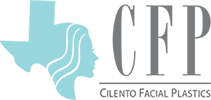Considering revision rhinoplasty for breathing problems can feel overwhelming, especially when previous nose surgery didn’t resolve your airway obstruction. If you’re in Houston, Spring, or The Woodlands and struggling with nasal congestion, snoring, or a deviated septum, a corrective procedure can restore both form and function. Revision rhinoplasty combines artistry with functional repair to improve your breathing, enhance facial balance, and boost confidence.
Understanding Revision Rhinoplasty for Breathing Problems
What Is Revision Rhinoplasty?
Revision rhinoplasty—also called secondary or corrective rhinoplasty—is a specialized procedure to address unsatisfactory outcomes or breathing difficulties following a primary rhinoplasty. This surgery often tackles issues such as persistent nasal obstruction, collapse of the nasal valve, or aesthetic irregularities. Board-certified facial plastic surgeons like Dr. Ben Cilento tailor each revision rhinoplasty to optimize nasal airflow and symmetry.
Why Do Breathing Problems Persist After Primary Rhinoplasty?
Even expertly performed primary procedures can result in:
- Deviated septum or residual septal deviation
- Collapsed internal or external nasal valves
- Scar tissue formation leading to obstruction
- Inadequate grafting of cartilage supports
- Over-resection of nasal bones or cartilage
Addressing these complex issues often requires precise functional rhinoplasty techniques and cartilage grafts to reopen airways.
Common Symptoms of Nasal Obstruction
Patients seeking revision rhinoplasty typically report:
- Chronic nasal congestion or blockage
- Difficulty breathing through one or both nostrils
- Loud snoring or sleep apnea symptoms
- Frequent sinus infections
- Nasal valve collapse during inhalation
Correcting these symptoms often enhances sleep quality, exercise tolerance, and overall well-being.
Who Is an Ideal Candidate?
Medical and Cosmetic Considerations
If you continue experiencing breathing difficulties or are dissatisfied with nasal appearance after initial surgery, you may benefit from a revision rhinoplasty. Ideal candidates are:
- In good overall health with realistic expectations
- At least 12–18 months post-primary rhinoplasty
- Free from uncontrolled medical conditions (e.g., severe hypertension)
- Committed to following pre- and post-operative care instructions
Consultation and Evaluation
During your consultation in The Woodlands, Dr. Ben Cilento performs a detailed examination of your nasal anatomy, reviews prior surgical records, and discusses your breathing concerns. Advanced imaging and rhinomanometry (nasal airflow testing) may be used to determine the precise areas needing correction.
Why Choose Dr. Ben Cilento and Cilento Facial Plastics?
Cilento Facial Plastics is a premier facial plastic surgery clinic in The Woodlands, Texas. Led by double board-certified facial plastic surgeon Dr. Ben Cilento, the practice is known for individualized care, advanced techniques, and exceptional outcomes. With decades of experience in cosmetic and reconstructive facial surgery, Dr. Cilento brings unparalleled expertise to every revision rhinoplasty case.
- Board Certifications: American Board of Facial Plastic and Reconstructive Surgery and American Board of Otolaryngology–Head and Neck Surgery (details at About Dr. Cilento).
- Comprehensive Services: From primary rhinoplasty and ethnic rhinoplasty to closed rhinoplasty and teen rhinoplasty.
- Individualized Approach: Customized surgical plans built on comprehensive functional evaluation.
- Advanced Techniques: Use of cartilage grafts, spreader grafts, and nasal valve reconstruction to optimize airflow.
The Revision Rhinoplasty Process
1. Preoperative Planning
Successful revision rhinoplasty hinges on meticulous planning. Dr. Cilento reviews any imaging (CT scans), analyzes nasal airflow, and discusses your aesthetic and functional goals. You’ll receive detailed instructions on medications, supplements, and lifestyle modifications before surgery.
2. Surgical Techniques
Depending on your needs, Dr. Cilento may perform:
- Functional Rhinoplasty: Addressing septal deviation and turbinate hypertrophy (learn more).
- Nasal Valve Reconstruction: Reinforcing collapsed valves with spreader or alar batten grafts.
- Graft Harvesting: Using septal, ear, or rib cartilage for structural support.
- Closed vs. Open Approach: Closed rhinoplasty for minimal scarring or open rhinoplasty for complex corrections.
3. Postoperative Care and Recovery
Following surgery, patients experience swelling and minor discomfort, managed with pain control and cold compresses. Nasal splints or packing are typically removed within one week. Most can return to light activities after 7–10 days and resume full exercise by 4–6 weeks. Final breathing improvements and aesthetic refinements become evident over six months to a year.
Benefits and Risks
Key Benefits
- Improved nasal airflow and breathing comfort
- Reduced snoring and sleep apnea symptoms
- Enhanced facial harmony and confidence
- Long-term durability of structural grafts
Potential Risks
As with any surgery, revision rhinoplasty carries risks such as bleeding, infection, or need for further refinement. Choosing a highly experienced, board-certified specialist like Dr. Cilento minimizes these risks and ensures a safer recovery. For more on rhinoplasty safety, see the American Society of Plastic Surgeons’ guidelines.
Cost Considerations and Insurance Coverage
Costs vary based on procedure complexity, anesthesia fees, and facility charges. Revision surgery is often more intricate than primary rhinoplasty due to scar tissue and previous grafts. Insurance may cover functional components (e.g., septoplasty or turbinate reduction) but typically not purely cosmetic refinements. Our team assists with pre-authorization and insurance claims to maximize your benefits.
Choosing the Best Revision Rhinoplasty Surgeon Near You
Key Qualifications to Look For
When searching for “expert rhinoplasty Houston” or “revision rhinoplasty Spring TX,” consider:
- Double board certification in facial plastic surgery and otolaryngology
- Extensive experience performing secondary rhinoplasty for breathing issues
- Patient testimonials and before-and-after photo galleries
- Membership in professional societies (e.g., American Academy of Facial Plastic and Reconstructive Surgery—see AAO-HNS)
Dr. Cilento consistently ranks among the best plastic surgeon in Houston and the best plastic surgeons in Texas for rhinoplasty.
Frequently Asked Questions
How long does recovery take after revision rhinoplasty?
Most patients return to work within 7–10 days. Swelling improves significantly by six weeks, with final results unfolding over 12–18 months.
Will revision rhinoplasty improve my snoring?
Yes—by correcting structural blockages such as septal deviations and nasal valve collapse, you can experience quieter breathing and reduced sleep apnea symptoms.
Can I combine revision rhinoplasty with other facial procedures?
Many patients combine revision rhinoplasty with facial contouring or eyelid surgery for a comprehensive facial rejuvenation.
Next Steps: Schedule Your Consultation
If you’re ready to breathe easier and achieve a refined nasal appearance, contact Cilento Facial Plastics in The Woodlands, Texas. Led by a renowned double board-certified surgeon, our clinic offers compassionate care and cutting-edge techniques tailored to your needs. Learn more about our approach to functional and cosmetic nasal surgery, or request your consultation today.
External Resources:


